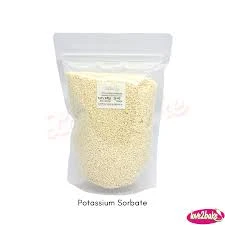
fertilizer prices
Understanding Fertilizer Prices Factors and Implications
Fertilizer prices play a crucial role in the agricultural sector, influencing everything from crop yields to food prices. As global demand for food continues to rise due to population growth and changing dietary patterns, understanding the dynamics of fertilizer pricing becomes increasingly important for farmers, policymakers, and consumers alike.
Several key factors contribute to fluctuations in fertilizer prices. First and foremost is the cost of raw materials. The production of fertilizers relies heavily on natural resources such as nitrogen, phosphorus, and potassium. Any disruption in the supply chain, whether due to geopolitical tensions, natural disasters, or tariff implementations, can lead to spikes in prices. For instance, recent global conflicts and trade disputes have caused significant price volatility in the fertilizer market.
Additionally, energy prices significantly affect fertilizer production costs. Fertilizers are energy-intensive products, and when oil and gas prices rise, manufacturers often pass these costs onto consumers. This relationship means that spikes in crude oil prices can lead to higher fertilizer costs, which in turn can impact the overall economics of farming. Farmers facing these increased costs may have to make difficult decisions regarding how much fertilizer to apply, which can ultimately affect agricultural productivity and food supply.
Economic factors, including inflation and currency fluctuations, also influence fertilizer prices. In countries where the currency is depreciating, the cost of imported fertilizers can rise sharply, leading to increased prices for local farmers. This situation can create a cascading effect, driving up food prices and potentially leading to food insecurity in vulnerable populations.
fertilizer prices

Seasonality is another aspect to consider. Fertilizer prices often fluctuate based on the planting and harvesting seasons. For example, prices may rise in the months leading up to planting as demand increases, then stabilize or fall after the harvest season begins. Farmers and agricultural suppliers need to navigate these seasonal variations to optimize their purchasing strategies and manage costs effectively.
In recent years, environmental considerations have also started to shape fertilizer pricing. Stricter regulations aimed at reducing the environmental impact of fertilizer applications—such as nitrate runoff into waterways—can lead to increased production costs. Additionally, the growing emphasis on sustainable farming practices may drive demand for more expensive organic fertilizers, further impacting overall fertilizer pricing trends.
The implications of fluctuating fertilizer prices extend beyond the farm gate. Increased fertilizer costs can lead to higher food prices, impacting consumers directly. In developing countries, where food security is a pressing concern, rising fertilizer costs can exacerbate poverty and limit access to essential nutrition. Furthermore, policymakers must balance the need to support domestic farmers with the need to keep food prices affordable for consumers.
In conclusion, fertilizer prices are influenced by a complex interplay of factors including raw material costs, energy prices, economic conditions, seasonality, and regulatory frameworks. As the global agricultural landscape evolves, understanding these dynamics will be critical for all stakeholders involved in food production and distribution. By keeping an eye on fertilizer pricing trends, farmers can make informed decisions that will help ensure food security and sustainability for future generations.
-
Pure Sodium Dichloroisocyanurate Dihydrate | Powerful DisinfectantNewsAug.29,2025
-
Industrial Chemicals: Quality & Purity for Every IndustryNewsAug.28,2025
-
Nitrile Rubber Honoring Strict Production StandardsNewsAug.22,2025
-
Aspartame Ingredients Honoring Food Safety ValuesNewsAug.22,2025
-
Fertilizer for Balanced Plant NutritionNewsAug.22,2025
-
Cyanide Gold Processing with High Purity AdditivesNewsAug.22,2025
-
Formic Acid in Textile Dyeing ApplicationsNewsAug.22,2025
Hebei Tenger Chemical Technology Co., Ltd. focuses on the chemical industry and is committed to the export service of chemical raw materials.
-

view more DiethanolisopropanolamineIn the ever-growing field of chemical solutions, diethanolisopropanolamine (DEIPA) stands out as a versatile and important compound. Due to its unique chemical structure and properties, DEIPA is of interest to various industries including construction, personal care, and agriculture. -

view more TriisopropanolamineTriisopropanolamine (TIPA) alkanol amine substance, is a kind of alcohol amine compound with amino and alcohol hydroxyl, and because of its molecules contains both amino and hydroxyl. -

view more Tetramethyl Thiuram DisulfideTetramethyl thiuram disulfide, also known as TMTD, is a white to light-yellow powder with a distinct sulfur-like odor. It is soluble in organic solvents such as benzene, acetone, and ethyl acetate, making it highly versatile for use in different formulations. TMTD is known for its excellent vulcanization acceleration properties, which makes it a key ingredient in the production of rubber products. Additionally, it acts as an effective fungicide and bactericide, making it valuable in agricultural applications. Its high purity and stability ensure consistent performance, making it a preferred choice for manufacturers across various industries.





